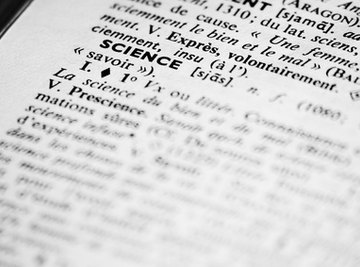
The Periodic Table of Elements as it is known today was developed by Russian chemist Dmitri Mendeleev and first presented in the German chemistry priodical Zeitschrift f?r Chemie in 1869. Mendeleev had originally created his “Periodic System” by writing properties of the elements onto pieces of cards and arranging them in order of increasing atomic weight. Mendeleev also determined that the relative atomic mass of some elements was wrongly calculated. By correcting this, he was able to place the elements into their correct place in the table. Mendeleev also left places for elements that had not yet been discovered. As of June 2010, the periodic table contain 118 confirmed elements.
On the periodic table of elements, columns of elements define element groups that share many common properties. There are two sets of groups in the periodic table. The first set are Group A elements and are also known as representative elements. The second set are Group B elements and are also known as transition metals. Representative elements are the most abundant elements on earth.
Representative Elements and Layout of the Periodic Table
On the Periodic Table of Elements, elements are arranged in columns known as \"groups,\" and rows known as \"periods.\" Groups contain elements with similar properties that have the same electron arrangement in their outer shells, known as \"valence electrons,\" which determine the properties of the element and it's chemical reactivity, and how it will take part in chemical bonding. The Roman numerals above each group dictate the usual number of valence electrons.
Groups are further divided into Representative Elements and Transition Metals. Groups 1A and 2A on the left and 3A through 8A on the right are classified as Representative Elements, while those elements in between are classified as Transition Metals. Representative Elements are also known as \"Group A,\" \"S and P Block Elements,\" or \"Main Group Elements.\"
Significance of the Layout
The layout of the periodic table demonstrates recurring chemical properties. Elements are listed in order of increasing atomic number (the number of protons in the atomic nucleus) and arranged so that elements with similar properties fall into the same columns. Elements are listed with, among other information, their element symbol, atomic number and atomic mass.
List of Representative Elements in S Block
The S Block elements or the elements in columns 1A and 2A on the left of the periodic table include Hydrogen (H), Lithium (Li), Sodium (Na), Potassium (K). Rubidium (Rb), Cesium (Cs), Francium (Fr), Beryllium (Be), Magnesium (Mg), Calcium (Ca), Strontium (Sr), Barium (Ba) and Radium (Ra).
List of Representative Elements in P Block
The P Block elements or the elements in columns 3A through 8A on the right of the periodic table include:
- Boron (B)
- Aluminum (Al)
- Gallium (Ga)
- Indium (In)
- Thallium (Tl)
- Carbon (C)
- Silicon (Si)
- Germanium (Ge)
- Tin (Sn)
- Lead (Pb)
- Ununquadium (Uuq)
- Nitrogen (N)
- Phosphorus (P)
- Arsenic (As)
- Antimony (Sb)
- Bismuth (Bi)
- Oxygen (O)
- Sulfur (S)
- Selenium (Se)
- Tellurium (Te)
- Polonium (Po)
- Fluoride (F)
- Chlorine (Cl)
- Bromine (Br)
- Iodine (I)
- Astatine (At)
- Helium (He)
- Neon (Ne)
- Argon (Ar)
- Krypton (Kr)
- Xenon (Xe)
- Radon (Rn)
Uses of the Periodic Table
One of the main uses of the periodic table is to predict the chemical properties of an element based on its location. Mendeleev used the trends in his table to predict the properties of five elements that had not yet been discovered at the time he constructed his table. Atom size, the ability to form a chemical bond, and the energy needed to remove an electron all decrease as one moves from left to right across a period and increase as one moves down a column.
References
- Royal Society of Chemistry: Dmitri Mendeleev
- \"The Periodic Table: It's Story and it's Significance,\" Eric Scerri, 2007
About the Author
Joshua Wade has been a freelance writer since 2006. Wade's poetry and short fiction have appeared in "The Frequent and Vigorous Quarterly" and "The Litter Box Magazine." He has also written for various online publications. Wade attended West Virginia University where he studied English and creative writing.
Photo Credits
science image by JMDZ from Fotolia.com
